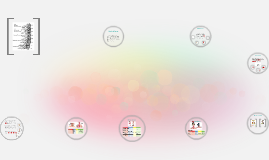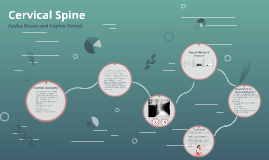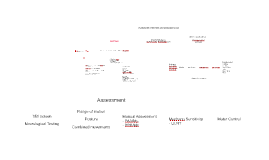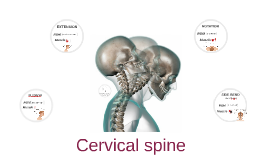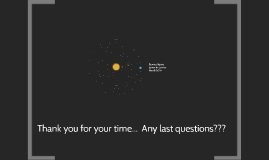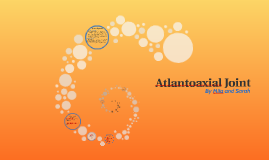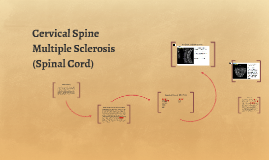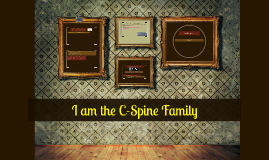Cervical Spine
Transcript: The father, Atlas (aka C1) sits at the base of the skull. He has the largest opening out of all of us because this is where he and the brain and/or skull meet up. He ALWAYS says "Yes" Our bodies are all made out of the same parts. We have a vertebral body, pedicle bones, lamina bones, spinous processes, transverse processes, and transverse foramen. We also have a lot of responsibility for the rotation, flexion, and extention of the head and neck! Mom and Dad are in charge of the head movement while my younger 3 brothers (C5, C6, C7) are in charge of flexion and extention! Conclusion....... DONE? Some problems our family can have: Other conditions: Fractures and spinal cord injuries that can debilitate, paralyze or cause death. Not good and needs to be taken seriously! We are made up of 7 family members Whiplash: sudden jerking motion to the head (a direct blow) causing head to violently jerk back and forth. I am the C-Spine Family Disc Herniation: pain, spasms, weakness, numbness, and some possible paresthesia. Common in my brothers C6 and C7. The mother, Axis (C2) has a pointy know called the dens that sits up into the Atlas. Mom always tells us "No" On the sides of us we have transverse processes with a hole called transverse foramen. This is where arteries supply blood throughout our whole neighborhood to keep the it all alive and well. Cervical Degeneration: cervical spurs or cerivical osteoarthritis. Cervical Osteoarthritis is the breakdown of cartilage inbetween the facet joints in our "C-spine" family. Pain presents early mornings, late nights, and calms with rest. Could cause pain in shoulders or shoulder blades. most common, stingers or burners (compression of the nerve root usually between my brothers (C5-C7). This can cause numbness, tingling, maybe some weakness to the extremities. This could take minutes to hours to resolve. Common reoccuring event. We all have an important job together as a family, this includes: Housing and protecting the spinal cord. supporting our neighbor, the head. Also facilitating blood flow to the brain.






